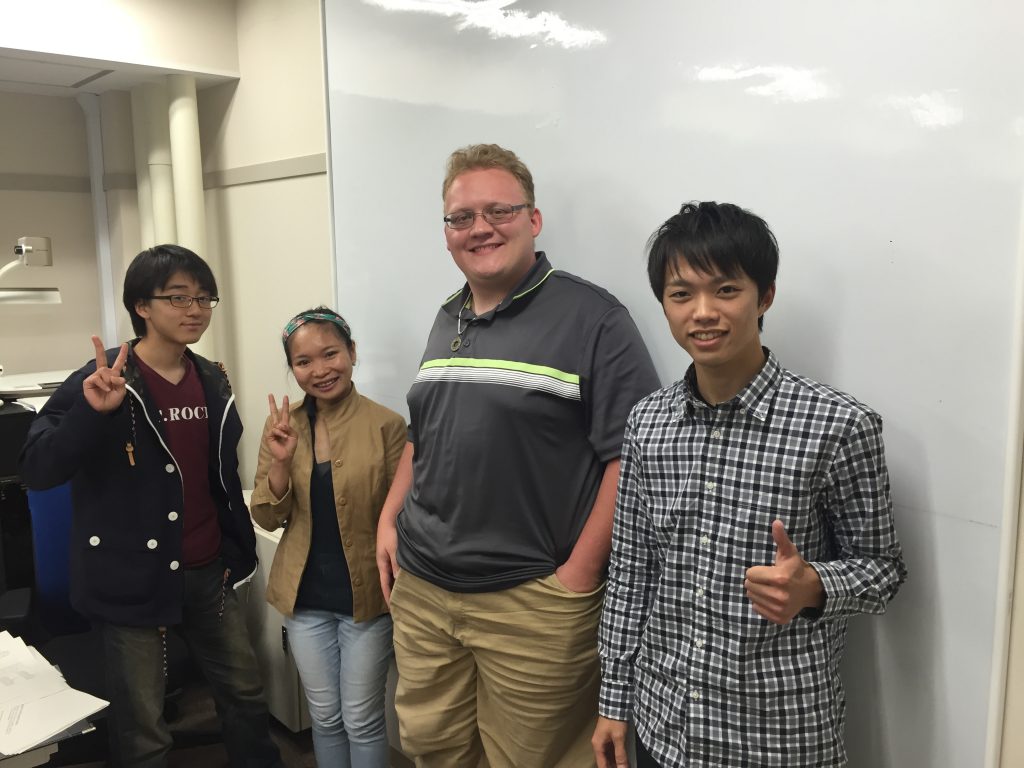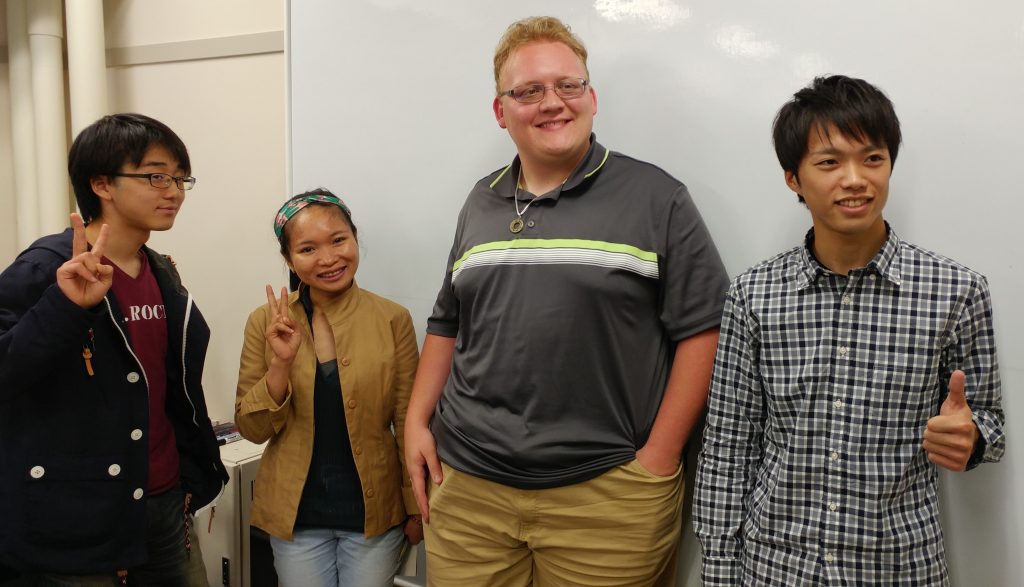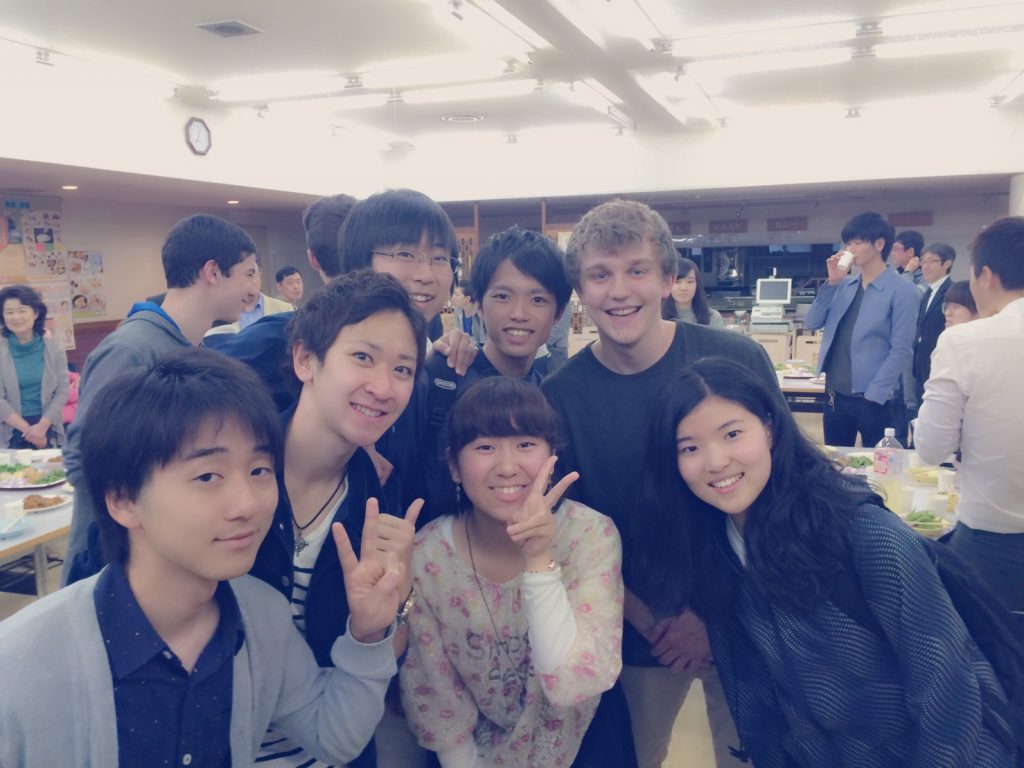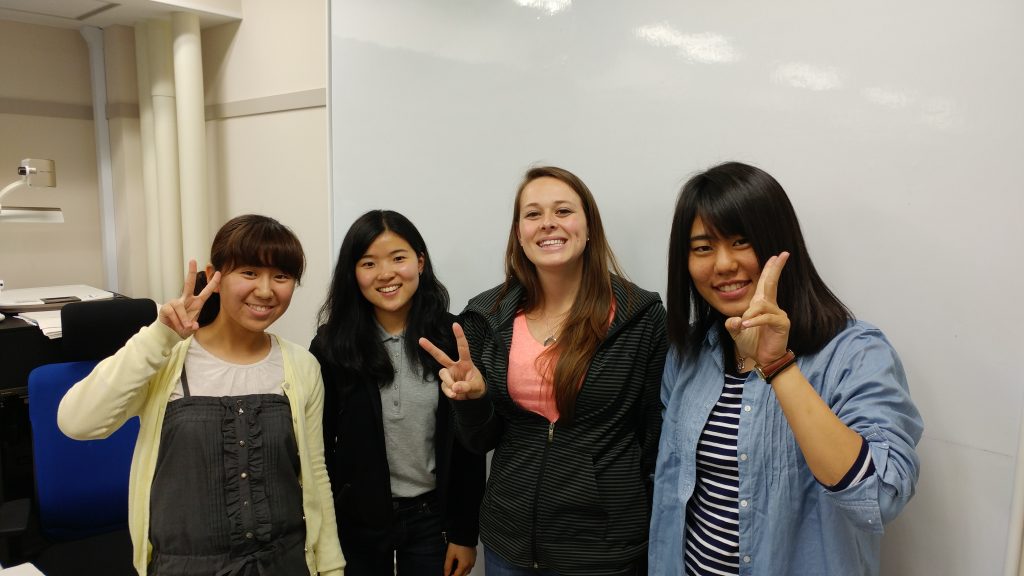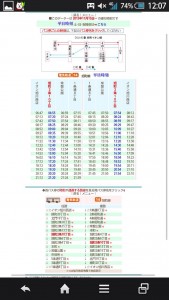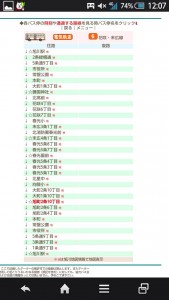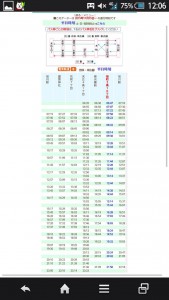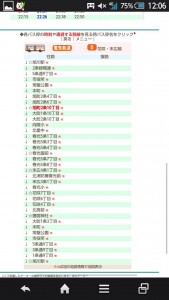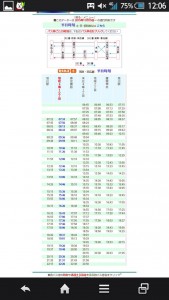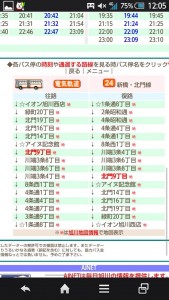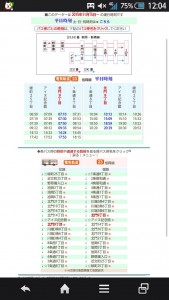Home » Study Abroad » Studying Abroad at HUEA
Category Archives: Studying Abroad at HUEA
Paying Bills at Convenience Stores
Published on March 11th, 2017 | by Akito
To live in a country, you need to pay for utilities for example, gas, electricity, and water. In other countries, it’s common to pay them by using a check, or online. But in Japanese society, you need to set up automated account transfer, use a credit card, or pay the bill at a store. In this article, I will talk about how to pay using the bill they send you.
Actually, it’s quite simple. All you need to do is just show the bill in convenience store and pay. You will get bills like this picture when deadline is nearing.
But be careful, the other bills will be sent to you. Some things are just meter checks and summaries of your costs – those are not your bills. In most cases, you will get two bills: the payment bill and the meter checking bill. Please remember, this is the payment one which you should show in convenience store.
(And “コンビニエンス” word means “convenience” store, so it’s easy to find it.)
I also interviewed an international student in my university. She said there is no problem in paying bills because there are a lot of convenience store around us, but she didn’t know how to pay the bills at first ,because the other bills were sent to her, so she didn’t have idea which bills should she show to convenience store.
At a glance, it seems very complicate and difficult, but it’s quite easy and simple thing. So, if you got bills like this picture, go to convenience store, and pay the bill, then, your payment will have done.
Interviews with International Students – Grant
Published on July 1st, 2016 | by drkathuea
[This interview was done by Kenta and Taiga]
At HUE Asahikawa, Grant studied differences between the American education system and the Japanese educational system.
When asked about the advantages of studying abroad, Grant explained that he felt the experience made him mentally stronger and that he learned a lot about culture through the experience.
While some people worry about money, Grant felt that you should not and that the experience is the most important part. Speaking of money, it cost about $5000 for Grant to study here. Grant was able to come due to a scholarship. But Grant really wanted to emphasize that the experience matters more.
While for most other exchange students, this was their first time abroad, Grant had actually been to Asahikawa and Japan before as a middle schooler. This is second time to come here and learn Japanese education system.
Grant felt that Japanese people were really polite but also very reserved about communicating with others. In America, we don’t stop talking even in a bus, but Japanese don’t do so. It is sometimes good to reserved, but sometimes not. While on the bus, he found it pleasant that people here are not blabbering to others on their phones while riding the bus but found it weird that they are constantly looking down. This is a big gap between Japanese and American bus-riding customs.
For Grant, the most challenging part of being in Japan is door jams. Since Grant is a tall guy, he hit his head several times. (But at least he could laugh about it!)
One thing he told us is to be surprised by how different the food sizes are between Japan and America – especially for things like steak.
Interviews with International Students – Corey
Published on June 29th, 2016 | by drkathuea
[This interview was done by Akito and Yuki]
Who is Corey?
Corey is from Illinois State University and he is majoring in business. Corey came to Japan to experience something new. This was first time to go abroad, and he thought this was a great experience. He was here for twenty six days, and he enjoyed, Japanese culture, food and the environment. He especially liked his homestay which was made easier by having a host-mom who could speak English. Through visiting a lot of Japanese schools, he remember to take off your shoes, less people and large room and non “Kyusyoku”.
Corey’s Experience with Japanese
Before he came, he couldn’t speak Japanese but he practiced Japanese here. So, now, he can speak Japanese and read Hiragana and Katakana. He thought that the Japanese people he met were friendly, welcoming, but shy.Moreover, he found that he could communicate with students in English So, he didn’t think language was a barrier for him here.
What he knew about HUE Asahikawa
He looked for information about HUE Asahikawa on the Internet before he came to Japan. And he found good Information on the school’s webpage.
He had three worries about studying abroad: language, food and trash separation. He found an English Japanese dictionary is useful and also a day planner so that you can fill out your weekends and keep tracking of what you’re doing., His favorite part of studying here was the food – especially curry and rice, sushi, and and Okonomiyaki.
He said he had no complaints and that everything about it was good! He found the Japanese classes easy to compared classes back at ISU because they had no tests and no homework. He felt that improved transportation would lead more people to think about going to HUE Asahikawa.
Him main advice for people who are thinking about studying abroad at HUE Asahikawa is to try new things and to be better experience.If you are planning to study abroad, his biggest piece of advice is to smile. If you smile, people will help you.
Interviews with International Students – Brianna
Published on June 28th, 2016 | by drkathuea
[We are three freshman in the GEL program that worked together for this interview: Reina, Ayako, and Kanami.]
We interviewed Brianna. She stayed in Japan was for 4 weeks. She is from Iowa state in USA, and she is a student as ISU (Illinois State University). She chose to come to HUE Asahikawa in Japan for studying abroad, because she wanted to go to a place different from anywhere she knows. Moreover, she wanted to learn culture and education. This time was both the first time for her to come to Japan and for her to study abroad.
Before she came to Japan, she worried about language issues, Internet access, and her host family. Then, when she came to Japan, she faced problems with both the language and the Internet. She couldn’t be able to communicating with HUE Asahikawa students, and couldn’t talk to her mother through the Internet for a few weeks.
While here at HUE Asahikawa, She took 3 Japanese classes here, and she found them helpful. She said that wants to learn more when she come to back. On a scale of 1 to 10 for language being a barrier, she had expected language to be a 9 before she came. But she felt it was only a 5 after she got here!
When she did not have classes, she did homework and spent a lot of time with her host family or friends in Japan. She loves her host family, so she misses them and that she won’t get to see them again is the worst part of studying abroad.
She also studied about culture and education while at HUE Asahikawa. Especially about culture, she learned that Japanese culture has formality and a lot of respect. In terms of traditional Japanese culture, she was able to experience kendo, ikebana flower arrangement, and tea ceremony. She described her experience to us as “adventure” in one word. She tried to communicate in Japanese, then she felt amazing. However, as the days went by, in college, host family, and even if in police office, she felt the kindness of people any time!
As students who want to study abroad and hang out with international students, she gave us some advice. She explained that Americans would be happy to talk with us. Therefore, when studying abroad, the most important things are that we should try to speak in English and not be shy all the time.
Interviews with International Students: Jo-Anne
Published on March 9th, 2016 | by Rihoko
I interviewed Jo-Anne. She is from Canada, and she is a student at Calgary University. She decided to come to Japan, because she had heard many good things about Japan. Before she left for Japan, she was worried about leaving Canada, getting around the problem, and cultural differences.
When she was Sapporo, she felt homesick. But, after she came to Asahikawa, she became fine. Feeling homesick was the hardest part of being Japan in Japan for her. And, she thinks it is important to have expectations what to do in Japan before you go.
Her main advice to people thinking about studying abroad at HUE Asahikawa is to give it a shot. She’s been recommending it to her friends. She felt the program she studied in was well-organized and the school plans were good. While here, she also enjoyed the tea ceremony and the school festival.
Interview with Alan from Taipei
Published on December 15th, 2015 | by Yusuke
In this post, I interviewed Alan, a junior, who came to Japan from Taipei City University. I asked him the following questions:
- Have you ever been abroad? Where did you go?
- Why did you decide to go abroad and why did you choose Japan or America?
- Did you have surprising or interesting experiences during the program and what?
- How did you learn English or Japanese before having go abroad?
- What are different points about classes from you’re your university?
- Did anything happen to you before and after having go abroad?
- Can you give any advice for students who want to go abroad I the future.
Alan told me, “I went to Japan when I was a senior high school student because that was also an exchange program but it wasn’t as formal as short-time overseas program I did in October, 2015. I found that Japanese are kind and friendly. Also, the food here is really tasty. I saw a funny teacher in his class and hid teaching style is what I want to emulate. I have learned English since I was a primary school student. I just know a little Japanese and the reason why I want to learn Japanese is that love Japan lol. In Japan, I think teachers won’t lecture all the time and they give time for students to express their thoughts. However, in Taiwan some teachers will keep lecturing without giving sometime for students to convey their thoughts. I think I know more about culture from going abroad like Japan. It’s always a nice try if you want to go abroad. Be nice, brave and hard working.”
Both guys told me that going abroad is a good opportunities to learn English and about other cultures. I think we can make good friends from other countries, and we will never forget that wonderful time. Why don’t you dive into the world with us at HUE?
Asahikawa Weather
Published on December 11th, 2015 | by Ayuna
In Asahikawa, it’s hot in summer and very cold in winter.
The temperature range is about 50℃ degrees. We have a lot of snow in January and February. We can ski and skate. Asahikawa winter festival is held in February every year. There is a big snow sculpture and a long slide made from snow and there are many beautiful ice sculptures(ライトアップされた) near the station during Asahikawa winter festival. In Asahiyama zoo, we can see penguins walk on snow only in winter. Because the four seasons are vivid here, the scenery is beautiful.
About the buses to and from H.U.E.A.
Published on December 4th, 2015 | by Mana
This time I am writing about the buses that can take you to and from campus. I know a lot about this because I ride buses to and from school every day. (yaaaay = it’s not always run riding the bus every day).
About the Bus System
In Asahikawa we have two kinds of buses, because there are two bus companies.
The one is “Asahikawa Denkikido Bus(旭川電気軌道バス)” (we usually say “ASADEN(あさでん)”)
The other is “Dohoku Bus(道北バス)”. Neither has a good website in English.
There’s way more ASADEN buses, so I am only going to explain how to use ASADEN.
Using Buses Near Campus
There are two main bus stops near H.U.E.A.’s campus.
First , there is the Hokumon-chou 9-choume(北門町9丁目) bus stop is near education building. At this stop, we can catch the ASADEN #23 and #24 buses.
Second, there is the Asahimachi 2-jou 10-tyoume(旭町2条10丁目) bus stop just north of campus. This is near L-building. At this stop, we can catch the ASADEN #5, #6, and #14 buses.
Taking buses in Asahikawa can be a little complicated. Moreover, Asahikawa has many snow and roads are freeze in winter.
So often buses arrive 5-10 or more minutes behind schedule in the winter.
How to get on and off the bus
First , we have to take the numbered ticket (seiri-ken). You can find this right side when you get on the bus.(If you have MARUPASS(マルパス)or ASAKA(アサカ), you don’t have to take the number ticket. You just touch your card on the machine.)
Second, when you want to get off next bus stop, you have to push the purple switch to ask the bus driver to stop the bus.
Third, When you get off the bus, you have to pay the fare. The fare is showed on electric bulletin board. You have to put the number ticket and then the money into the box.(If you have MARUPASS or ASAKA, you don’t need to pay money. you just touch your card on the machine. )
Current Bus Info
The information below is about the bus schedule as of November 15, 2015. They change the bus schedule every six months.

